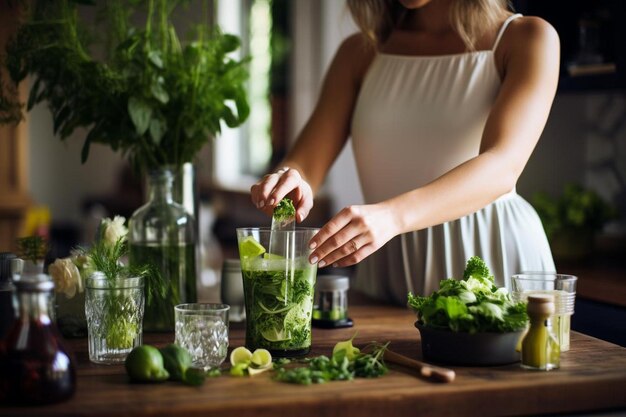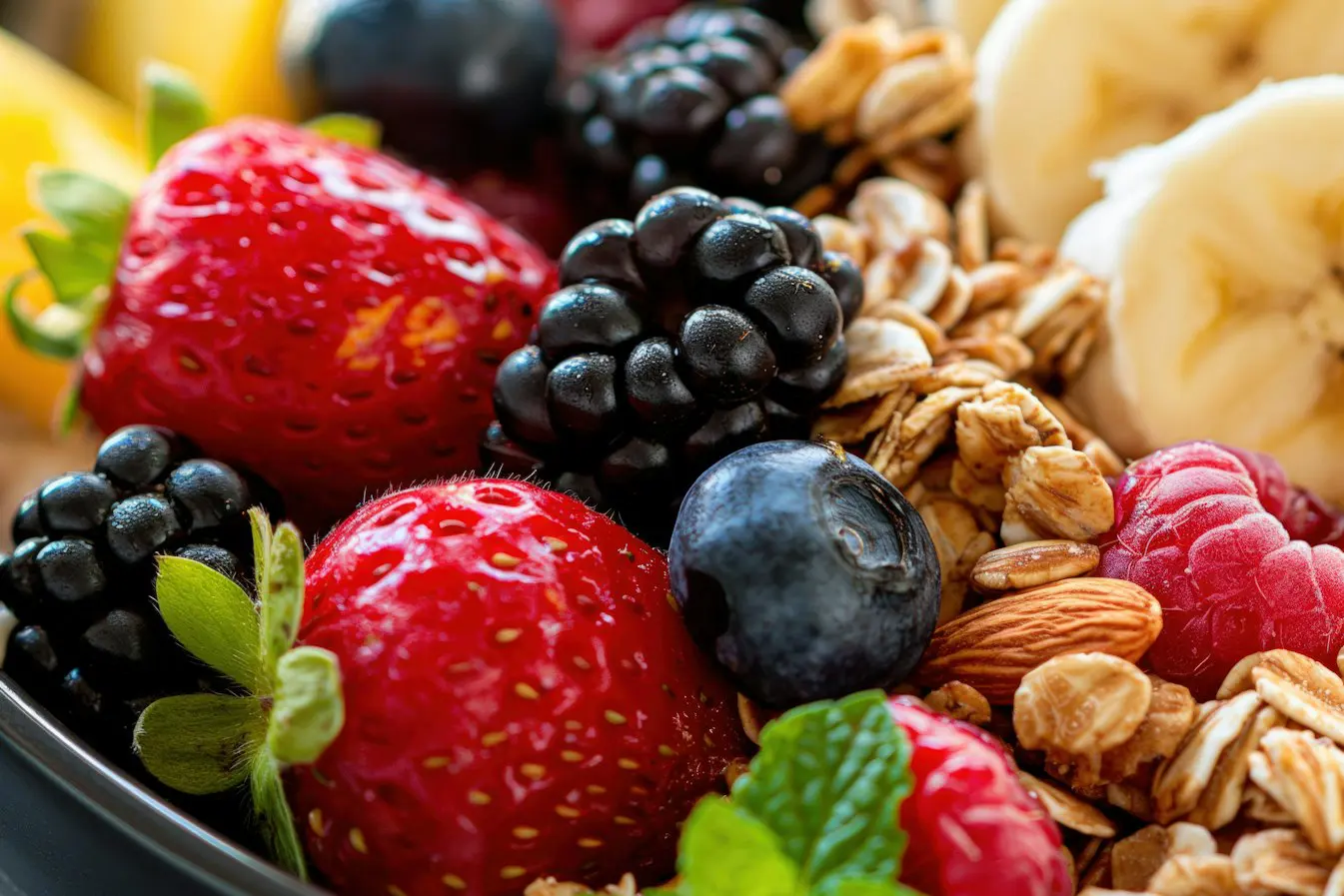In the quest for radiant, healthy skin, many of us turn to expensive creams, serums, and treatments. However, the secret to achieving a natural glow might be closer than you think—right in your kitchen. The foods we consume play a crucial role in the health and appearance of our skin. By incorporating nutrient-rich superfoods into your diet, you can nourish your skin from the inside out, promoting a youthful, vibrant complexion. In this article, we’ll explore the best superfoods for super skin and how they work to enhance your natural beauty.
The Science Behind Skin and Nutrition
Before diving into the specific superfoods, it’s important to understand the connection between nutrition and skin health. Your skin is the largest organ in your body, and it requires a variety of vitamins, minerals, antioxidants, and healthy fats to function optimally. Nutrients like vitamin C, vitamin E, omega-3 fatty acids, and zinc play key roles in collagen production, hydration, and protection against environmental damage.
When your diet lacks these essential nutrients, your skin may become dry, dull, or prone to breakouts. On the other hand, a diet rich in superfoods can help combat inflammation, protect against free radicals, and promote cell regeneration, leading to a clearer, more radiant complexion.
The connection between skin health and nutrition is both fascinating and complex. Here’s a breakdown of the science behind it:
1. Skin as a Barrier
- Your skin is the body’s largest organ and acts as a protective barrier against environmental factors like UV radiation, pollution, and pathogens.
- The health of this barrier is influenced by various nutrients, which help maintain its structure and function.
2. Key Nutrients for Skin Health
- Vitamin A (Retinoids): Essential for skin cell turnover and repair. It helps in reducing wrinkles and dark spots and boosts skin hydration. Found in foods like sweet potatoes, carrots, and leafy greens.
- Vitamin C: A powerful antioxidant that helps in the synthesis of collagen (a protein that provides skin structure and elasticity). Vitamin C also helps protect the skin from UV damage and supports wound healing. Citrus fruits, berries, and bell peppers are rich in it.
- Vitamin E: Known for its antioxidant properties, vitamin E helps protect skin cells from oxidative stress and supports overall skin repair. Sources include almonds, sunflower seeds, and avocado.
- Zinc: Zinc plays a critical role in skin repair, inflammation control, and the production of collagen. It’s important for acne prevention and healing. Found in shellfish, legumes, and seeds.
- Omega-3 Fatty Acids: Essential fatty acids (like those found in fish, chia seeds, and walnuts) support the skin’s natural oil barrier, which helps keep skin hydrated and prevents dryness.
- Selenium: This mineral helps protect the skin from oxidative damage and UV rays, which can lead to premature aging. It is found in foods like Brazil nuts, sunflower seeds, and seafood.
3. The Role of Antioxidants
- Antioxidants (like vitamins C and E) neutralize free radicals in the body, which are unstable molecules that can damage skin cells and lead to aging, inflammation, and even conditions like acne.
- Free radicals can be generated from exposure to sun, pollution, and toxins, which makes antioxidants crucial for protecting the skin from daily environmental stressors.
4. Gut-Skin Connection
- The gut microbiome is also linked to skin health. A balanced gut microbiota is essential for reducing inflammation, which can affect the skin, particularly in conditions like acne, eczema, and rosacea.
- Probiotics (found in foods like yogurt, kefir, and kimchi) and prebiotics (fiber-rich foods like bananas and whole grains) help support a healthy gut, which can, in turn, improve skin health.
5. Hydration and Skin
- Proper hydration is vital for maintaining skin elasticity and preventing dryness. Water helps deliver nutrients to skin cells and supports the body’s natural detoxification processes, which are important for glowing skin.
- Dehydration can lead to dull, dry, and flaky skin, so it’s essential to drink enough water and consume hydrating foods like cucumbers, watermelon, and celery.
6. Sugar and Inflammation
- Diets high in refined sugar and processed foods can contribute to inflammation, leading to conditions like acne, premature aging, and other skin issues. High sugar intake leads to the formation of advanced glycation end products (AGEs), which damage collagen and elastin in the skin, contributing to wrinkles and sagging.
7. Acne and Diet
- Research shows that high-glycemic foods (like white bread and sugary snacks) and dairy products may exacerbate acne by increasing insulin levels and inflammation in the body.
- A diet rich in anti-inflammatory foods, like fatty fish, nuts, and fruits, can help reduce acne symptoms by calming the skin.
8. Skin Aging and Nutrition
- Nutrients like collagen peptides, vitamin C, and antioxidants play significant roles in reducing the visible signs of aging, such as fine lines and sagging skin.
- Collagen, a protein that gives skin its structure, decreases with age. Consuming collagen-rich foods like bone broth, or collagen supplements, may help replenish this protein in the skin.
In short, a nutrient-dense diet with a focus on antioxidants, healthy fats, vitamins, and minerals is key to maintaining healthy skin. Avoiding excessive sugar, processed foods, and maintaining hydration are also essential components of skin nutrition.
Top Superfoods for Super Skin
Avocados are a powerhouse of healthy fats, particularly monounsaturated fats, which help keep your skin moisturized and supple. They’re also rich in vitamin E, an antioxidant that protects your skin from oxidative damage, and vitamin C, which is essential for collagen synthesis. Additionally, avocados contain biotin, a B-vitamin that helps prevent dry skin and brittle hair.
Blueberries are packed with antioxidants, particularly anthocyanins, which help protect your skin from free radical damage caused by UV rays and pollution. Blueberries are also high in vitamin C, which brightens the skin and promotes collagen production. Their anti-inflammatory properties can help reduce redness and irritation.
Salmon is an excellent source of omega-3 fatty acids, which are crucial for maintaining the skin’s lipid barrier. This helps lock in moisture and keep your skin hydrated. Omega-3s also have anti-inflammatory properties that can help reduce acne and redness. Additionally, salmon contains astaxanthin, a carotenoid that improves skin elasticity and reduces the signs of aging.
Sweet Potatoes are rich in beta-carotene, a precursor to vitamin A, which is essential for skin cell turnover and repair. Beta-carotene also acts as a natural sunblock, protecting your skin from UV damage and giving it a warm, healthy glow. The high vitamin C content in sweet potatoes further supports collagen production.
Spinach is loaded with vitamins A, C, and E, as well as iron and folate. These nutrients work together to promote skin repair, reduce inflammation, and improve circulation, giving your skin a healthy, radiant appearance. Spinach also contains chlorophyll, which has detoxifying properties that can help clear up acne.
Walnuts are a great source of essential fatty acids, including omega-3s and omega-6s, which help maintain the skin’s natural oil barrier. They’re also rich in zinc, a mineral that supports skin healing and reduces inflammation. The antioxidants in walnuts, such as vitamin E and selenium, protect your skin from environmental stressors.
Chia Seeds are a fantastic source of omega-3 fatty acids, fiber, and antioxidants. These tiny seeds help keep your skin hydrated and reduce inflammation, which can lead to a clearer complexion. They also contain zinc, which aids in skin repair and regeneration.
Green Tea is renowned for its high levels of polyphenols, particularly catechins, which have powerful antioxidant and anti-inflammatory properties. Drinking green tea can help protect your skin from UV damage, reduce redness, and improve elasticity. It also contains epigallocatechin gallate (EGCG), which has been shown to reduce acne and oily skin.
Tomatoes are rich in lycopene, a carotenoid that protects your skin from sun damage and improves its texture. Lycopene also has anti-aging properties, helping to reduce the appearance of fine lines and wrinkles. Cooking tomatoes can increase their lycopene content, making tomato sauce or soup a great option.
Dark Chocolate is packed with flavonoids, which improve blood flow to the skin, enhance hydration, and protect against sun damage. The antioxidants in dark chocolate also help reduce inflammation and improve skin texture.
Cucumbers are excellent for keeping the skin hydrated due to their high water content. They also contain antioxidants and silica, which support the skin’s connective tissue. You can eat them raw, add them to salads, or even use them in a hydrating face mask.
Pomegranates are packed with antioxidants that protect the skin from oxidative stress and promote collagen production, giving the skin a firmer, youthful appearance. You can enjoy the seeds, add them to salads, or drink pomegranate juice for an extra boost.
Acai Berries are rich in antioxidants, essential fatty acids, and fiber, which nourish the skin, promote healthy collagen production, and protect against aging. You can add acai berries to smoothies or bowls, or use acai powder in your recipes for a skin-boosting treat.
Olive Oil is full of antioxidants and healthy fats, helping to maintain skin hydration and elasticity. It can also reduce the appearance of fine lines and wrinkles. Drizzle it over salads, use it in cooking, or apply it topically for a natural moisturizer.
Kale is packed with vitamins A, C, and K, which are fantastic for skin repair, collagen production, and maintaining a healthy complexion. It can be added to salads, smoothies, or cooked as a side dish for an extra nutrient boost.
Papaya is rich in vitamins A, C, and E, which help keep skin clear, fight aging, and reduce wrinkles. The enzymes in papaya also help exfoliate the skin naturally. You can eat it raw, blend it into smoothies, or apply the pulp as a natural face mask.
Beets are high in antioxidants and betaine, which improve circulation and deliver oxygen and nutrients to the skin, promoting a healthy, radiant glow. They can be roasted, juiced, or added to salads for a skin-loving addition to your diet.



